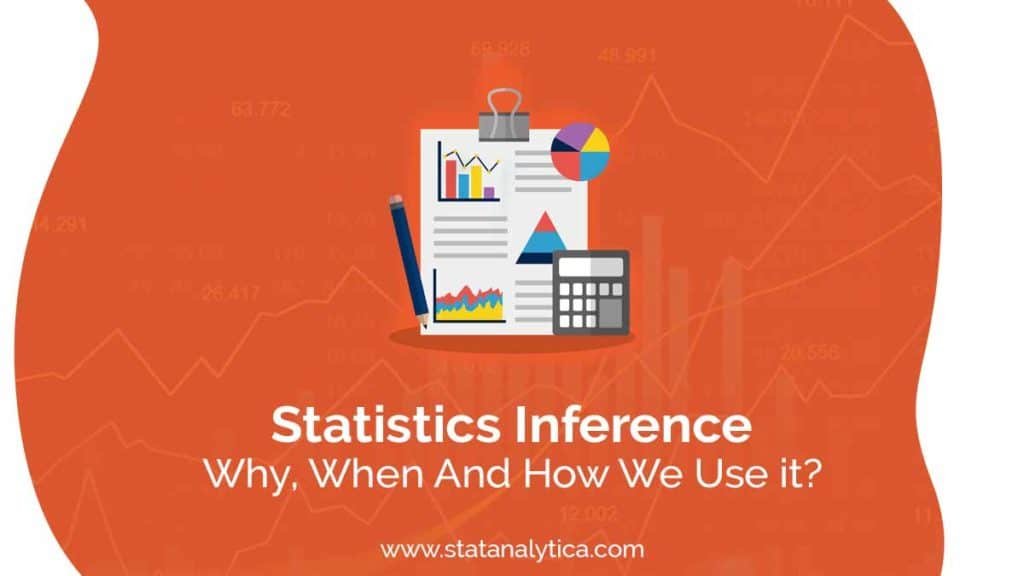Here we are going to discuss statistics inference. Statistics is one of the branches of mathematics which deals with collecting the data, analyzing, interpretation of the data, and the visualization of the numeric data. Or we can simply say that it is the collection of the quantitative data used to make accurate summaries of the data using the limited samples of the great populations. There are two different types of statistics data:
- Descriptive Statistics.
- Inferential Statistics.
The descriptive type of statistics are used to describe the data, and inferential statistics are used to make predictions of the data that allows generalizing the population.
Statistical inference is meant to be “guessing” about something about the population. There are several techniques to analyze the statistical data and to make the conclusion of that particular data. In this post, we will discuss the inferential statistics in detail that includes the definition of inference, types of it, solutions, and examples of it.
What do you understand by statistical inference?
Table of Contents
Statistical inference is a technique by which you can analyze the result and make conclusions from the given data to the random variations. The confidence interval and hypothesis tests are carried out as the applications of the statistical inference. It is used to make decisions of a population’s parameters, which are based on random sampling. The relationship between independent and dependent variables can be accessed with the help of it. The main objective of statistical inference is to predict the uncertainty of the sample or sample to sample variations. This offers a range of values for the real values of the given population samples. It depends on the three forms that are essential for estimating the values of inferential data; these are:
- Point Estimation.
- Interval Estimation.
- Hypothesis Testing.
There are three other basic things that are required to make the statistical inference, which are:
- Variability in the given sample.
- Sample size.
- Size of an observed difference in the sample.
What are the types of statistics inference?
There are several kinds of statistics inference which are used extensively to make the conclusions. The types are:
- Confidence interval.
- Bi-variate regression.
- Contingency table and chi-square statistics.
- One sample hypothesis testing.
- Pearson correlation.
- Multi-variate regression.
- T-test or ANOVA.
What is the importance of statistics inference?
With the help of the statistical inference, one can examine the data more accurately and effectively. The proper examination of the data is required to provide accurate conclusions that are important to interpret the results of research work. These are used to predict future variations that are essential for several observations for different fields. It can make the inferences of different data values. The statistical inference can be used for a various range of applications which are used in different fields like:
- Artificial Intelligence.
- Fraud Detection.
- Share Market.
- Business Analysis.
- Financial Analysis.
- Machine Learning.
- Pharmaceutical Sector.
What is the procedure for statistics inference?
There are several steps to carry out the analysis of the inferential statistics, that are:
- The initial step starts with the theory of the given data.
- The research hypothesis can be created by analyzing the given theory.
- The variables of the research hypothesis can operationalize with the help of the inferential theory.
- The study results need to be applied to the recognized value of the population.
- Now, you need to formulate the null hypothesis of the given population value.
- Collect the sample of the children from the given population value and carried out further study.
- Examine statistic tests to check whether the gathered sample properties differ from your expected value or not under the null hypothesis, which can be rejected in the future.
The solutions of statistics inference
One can use the solutions of statistical inference to produce statistical data related to the group of trials and individuals. It can deal with any kind of character that involves the collection of the data, investigation, analyzing, and finally organizing the collected data. Individuals can get knowledge with the help of statistical inference solutions after initiating the work in several fields. There are some facts about the solution of inferential data that are:
- The solutions are used to analyze the factor(s) of the expected samples, such as binomial proportions or normal means.
- It is a common method to predict the observed values of a sample that has independent observations from a given population type, such as normal or Poisson.
Example of statistics inference
Let’s take an example of inferential statistics that are given below.
Problem: A bag contains four different colors of balls that are white, red, black, and blue, a ball is selected. This trail is repeated for 200 times, and collected the data as given in the table:
| Balls | White | Red | Black | Blue |
| Number of times, the ball is selected | 50 | 40 | 60 | 50 |
When a ball is selected at random, then find out the probability of getting a:
- Blue ball.
- White and red balls.
- Except for the white ball.
Solution
This problem can be solved with the help of statistical inference solutions;
The total number of events is given as 200, which is:
50+40+60+50 = 200
- The probability of selecting a blue ball is given by:
The number of trails in which blue ball is selected = 50
That is why P(blue ball) = 50/200 = 0.25
- The probability of selecting the white and red balls:
The number of trials in which white and red balls are selected = 50+40 = 90
Therefore, the probability of the balls given as P(W&R balls) = 90/200 = 0.45
- The probability of getting the balls except for white:
The number of trails that are other than white balls selection is = 40+60+50 = 150
Therefore, we can calculate the probability as P(except white balls) = 150/200 = 0.75
Conclusion
This blog has provided all the relevant information about statistics inference, which is used to analyze the data and to give accurate results on the basis of given observations. This post includes details of inferential statistics that include the definitions, types, importance, procedure to carry out the inferences, the solutions of the inferential data, and finally, an example. All these help you to understand the inferences and how one can easily use the formula of statistics inferential in calculating the different data types.
If you are a school or college or university student and you are facing any difficulties related to your assignments and homework, then you can contact our customer support executives who are accessible 24/7 to you to avail of our services. We have a professionals team that is well-qualified and have years of experience that are required to write well-structured and relevant assignments. We provide you high-quality college math assignment help and engineering mathematics assignment help at reasonable prices and deliver it before the deadlines.


